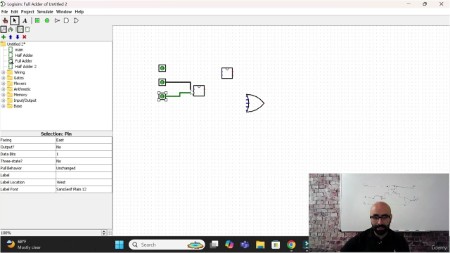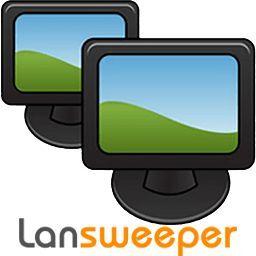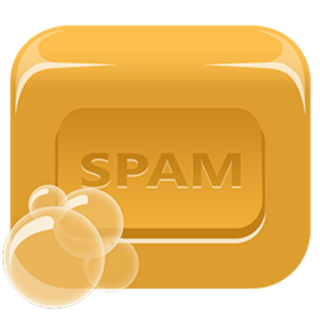Most Commented
Digital Circuits Foundations: Learn And Apply With Ease





Description material

Digital Circuits Foundations: Learn And Apply With Ease
Published 10/2024
MP4 | Video: h264, 1920x1080 | Audio: AAC, 44.1 KHz
Language: English | Size: 11.49 GB | Duration: 9h 41m
Logic Gates, Combinational Circuits, Sequential Circuits, Karnaugh maps, Boolean Algebra
What you'll learn
Converting Decimal to Binary numbers and vice versa
Perform binary arithmetic operations
Building digital circuits using logic gates
Simplify circuits using Boolean algebra
Optimize digital circuits using Karnaugh maps
Building combinational digital circuits
Building sequential circuits
Requirements
basic algebra
Description
In this comprehensive course, you'll gain a solid foundation in digital circuits, starting with an introduction to the decimal and binary numbering systems. You'll learn how to perform binary arithmetic, a crucial skill for understanding digital logic. From there, we dive into the world of logic gates, where you'll explore how these fundamental building blocks operate and how to analyze their behavior in different circuits.Next, we move on to Boolean algebra, a powerful mathematical tool used to simplify and manipulate logic expressions. You'll also learn the process of standardization to convert logic expressions into standard forms like sum-of-products (SOP) and product-of-sums (POS). Following this, we introduce Karnaugh Maps (K-Maps), a visual technique to further simplify logic circuits, making them more efficient and easier to design.As the course progresses, you'll explore combinational logic circuits, which use logic gates to perform specific tasks without memory elements. Finally, the course wraps up with an introduction to sequential circuits, where memory elements come into play, and you'll learn how to design circuits with timing considerations. To ensure a straightforward and accessible learning experience, this course introduces all topics using two input variables. Once these concepts are well understood, they can be easily extended to handle multiple variables. Throughout the course, you'll apply these concepts to practical examples and simulations, ensuring you can confidently design and analyze digital circuits in real-world scenarios such as security and industrial safety systems and many other applications.Please note that students under the age of 18 may only access this course if a parent or guardian purchases and manages the account. All course materials are intended for adult supervision to ensure a guided and responsible learning experience for younger students.
Overview
Section 1: Introduction
Lecture 1 Introduction
Lecture 2 Course Learning Objectives
Lecture 3 Simulation tool used in the course
Section 2: Numbering Systems
Lecture 4 Decimal Numbering System
Lecture 5 Decimal Numbers Representation: Sum of Weights Method
Lecture 6 Binary Numbering System
Lecture 7 Converting a Binary Number to a Decimal Number: Sum of Weights Method
Lecture 8 Converting a Binary Number to a Decimal Number: Repetitive Division Method
Lecture 9 Counting in Binary using the Sum of Weights Method
Lecture 10 Converting a Decimal Number to Binary using the Sum of Weights Method
Lecture 11 Counting in Binary (A Systemic Approach)
Lecture 12 Binary Numbers Addition
Section 3: Simple Logic Gates & Digital Circuits
Lecture 13 Introduction to Logic Gates
Lecture 14 Binary Numbers and Voltage Levels
Lecture 15 The NOT Gate (Inverter)
Lecture 16 The AND Gate
Lecture 17 The OR Gate
Lecture 18 Practical Applications Design Process
Lecture 19 A Smart Home Lighting System Design I
Lecture 20 A Smart Home Lighting System Design II
Lecture 21 A Smart Home Lighting System Design III
Section 4: Complex Logic Gates
Lecture 22 The NAND Gate
Lecture 23 The NOR Gate
Lecture 24 The XOR and XNOR Gates
Lecture 25 Industrial Safety System Design I
Lecture 26 Industrial Safety System Simulation
Section 5: Boolean Algebra
Lecture 27 Boolean Algebra Basic Theorem
Lecture 28 Idempotent, Complementary, Involution and Commutative Laws
Lecture 29 Associative Laws
Lecture 30 First and Second Distributive Laws
Lecture 31 Demorgan's Theorem
Lecture 32 Industrial Safety System Optimization using Boolean Algebra
Lecture 33 Industrial Safety System Optimization using Boolean Algebra Simulation
Section 6: Standardizing Boolean Expressions
Lecture 34 Standard Logical Expressions, SOP and POS Introduction
Lecture 35 Categorizing Boolean Expressions
Lecture 36 Converting Boolean Expressions to a SOP I
Lecture 37 Converting Boolean Expressions to a SOP II
Lecture 38 Building a Truth Table using a SOP
Lecture 39 Getting a SOP expression from a Truth Table
Lecture 40 Building a Digital Circuit using a SOP expression
Lecture 41 A Security System Design
Lecture 42 Standard Product of Sums (POS)
Lecture 43 Building a Truth Table from a POS
Lecture 44 Creating a POS expression from a Truth Table
Lecture 45 Creating a Digital Circuit using a POS expression
Lecture 46 Choosing a SOP or a POS
Section 7: Karnaugh Maps (2 Variables Only)
Lecture 47 An Introduction of K-Maps
Lecture 48 Translating logical expressions to a K-map
Lecture 49 K-Maps Neighborhoods
Lecture 50 Simplifying Logical Expressions using a K-map
Section 8: Combinational Digital Circuits
Lecture 51 The Half Adder circuit
Lecture 52 Implementing Full Adders using Half Adders
Lecture 53 Simulation of Half Adders and Full Adders
Lecture 54 Encoders Our way to Talk to Digital Circuits
Lecture 55 Encoders Simulation
Lecture 56 Decoders, The Way Digital Circuits Talk to us
Lecture 57 Decoders Design I
Lecture 58 2X4 Decoders Design
Lecture 59 Implementing a Half Adder using a Decoder
Lecture 60 A Decoder Simulation
Lecture 61 A 7 Segment Decoder Design
Lecture 62 A 7 Segment Decoder Design II
Lecture 63 A 7 Segment Decoder Simulation
Lecture 64 The Multiplexer Circuit Design
Lecture 65 A 4X1 Multiplexer Design
Lecture 66 Multiplexer Circuit Simulation
Section 9: Sequential Circuits
Lecture 67 The SR Latch an Intro
Lecture 68 The SR Latch circuit Analysis
Lecture 69 The SR Latch Characteristics Table
Lecture 70 The SR Latch optimization to reduce power consumption
Lecture 71 Controlled (Gated) SR Latch
Lecture 72 The D Latch
Lecture 73 The Controlled D Latch
Lecture 74 The D Flip Flop
Lecture 75 The D Flip Flop Characteristics Table
Lecture 76 Synchronous Counter Design I
Lecture 77 Synchronous Counter Design II
Lecture 78 A Synchronous Counter Simulation
Section 10: Concluding Remarks
Lecture 79 Concluding Remarks
College and high school students who are studying digital circuits and seeking a clear, structured approach to learning the fundamentals.,Hobbyists and DIY enthusiasts interested in understanding the building blocks of digital electronics, whether for personal projects or expanding their knowledge.,Learners new to digital circuits who may feel overwhelmed by complex concepts and are looking for simplified, practical explanations.,Students taking a digital circuits course who want additional support to grasp difficult topics and need a more digestible approach.,Professionals or engineers seeking a quick refresher on digital circuit fundamentals to strengthen their foundational knowledge.

Download
Fikper
https://fikper.com/9ATvlhun1d/Digital.Circuits.Foundations.Learn.and.Apply.with.Ease.part1.rar.html
https://fikper.com/0Ukkd6XqAl/Digital.Circuits.Foundations.Learn.and.Apply.with.Ease.part2.rar.html
https://fikper.com/DBNVgrMHbZ/Digital.Circuits.Foundations.Learn.and.Apply.with.Ease.part3.rar.html
https://fikper.com/oo9pHqSMKu/Digital.Circuits.Foundations.Learn.and.Apply.with.Ease.part4.rar.html
https://fikper.com/t8yMhiDnZk/Digital.Circuits.Foundations.Learn.and.Apply.with.Ease.part5.rar.html
https://fikper.com/PQr8OHmt3o/Digital.Circuits.Foundations.Learn.and.Apply.with.Ease.part6.rar.html
FileAxa
https://fileaxa.com/5opzdqs7gwev/1.-Introduction.mp4
https://fileaxa.com/yhssxmm4srcw/2.-Course.Learning.Objectives.mp4
https://fileaxa.com/6tc93en43cc8/3.-Simulation.tool.used.in.the.course.mp4
https://fileaxa.com/rh7k323qb11h/1.-Decimal.Numbering.System.mp4
https://fileaxa.com/8sozx8hqmhcz/2.-Decimal.Numbers.Representation.Sum.of.Weights.Method.mp4
https://fileaxa.com/1tboecgzw7bb/3.-Binary.Numbering.System.mp4
https://fileaxa.com/95wgrfqv9upe/4.-Converting.a.Binary.Number.to.a.Decimal.Number.Sum.of.Weights.Method.mp4
https://fileaxa.com/exklumust0zu/5.-Converting.a.Binary.Number.to.a.Decimal.Number.Repetitive.Division.Method.mp4
https://fileaxa.com/5shcg6buojra/6.-Counting.in.Binary.using.the.Sum.of.Weights.Method.mp4
https://fileaxa.com/bfbik8utmpc3/7.-Converting.a.Decimal.Number.to.Binary.using.the.Sum.of.Weights.Method.mp4
https://fileaxa.com/j25dyppq07kx/8.-Counting.in.Binary.A.Systemic.Approach.mp4
https://fileaxa.com/rpa0f16pa1wo/9.-Binary.Numbers.Addition.mp4
https://fileaxa.com/jwti0otgahou/1.-Introduction.to.Logic.Gates.mp4
https://fileaxa.com/vj1pzmoiias7/2.-Binary.Numbers.and.Voltage.Levels.mp4
https://fileaxa.com/z3165zdm34l6/3.-The.NOT.Gate.Inverter.mp4
https://fileaxa.com/amef8ecrisuc/4.-The.AND.Gate.mp4
https://fileaxa.com/5fktuqsglqc2/5.-The.OR.Gate.mp4
https://fileaxa.com/4fzt1ibr4z0x/6.-Practical.Applications.Design.Process.mp4
https://fileaxa.com/sx6ut5fu1oq7/7.-A.Smart.Home.Lighting.System.Design.I.mp4
https://fileaxa.com/qs8p3jea65yi/8.-A.Smart.Home.Lighting.System.Design.II.mp4
https://fileaxa.com/mgtvknvw4yrb/9.-A.Smart.Home.Lighting.System.Design.III.mp4
https://fileaxa.com/qk59yvf20h5r/1.-The.NAND.Gate.mp4
https://fileaxa.com/n2d2wczhhdot/2.-The.NOR.Gate.mp4
https://fileaxa.com/7qwidyyyct9l/3.-The.XOR.and.XNOR.Gates.mp4
https://fileaxa.com/n67hdk9yljlf/4.-Industrial.Safety.System.Design.I.mp4
https://fileaxa.com/c4s56tk3w03w/5.-Industrial.Safety.System.Simulation.mp4
https://fileaxa.com/yklza86qk303/1.-Boolean.Algebra.Basic.Theorem.mp4
https://fileaxa.com/iij3nx1563t7/2.-Idempotent.Complementary.Involution.and.Commutative.Laws.mp4
https://fileaxa.com/8bkndns34ir2/3.-Associative.Laws.mp4
https://fileaxa.com/dj4aemzl1jt0/4.-First.and.Second.Distributive.Laws.mp4
https://fileaxa.com/9vatoxxx3pkn/5.-Demorgans.Theorem.mp4
https://fileaxa.com/9zzu3bwclucd/6.-Industrial.Safety.System.Optimization.using.Boolean.Algebra.mp4
https://fileaxa.com/79x9b8oo0nfy/7.-Industrial.Safety.System.Optimization.using.Boolean.Algebra.Simulation.mp4
https://fileaxa.com/jrqh2u8ja4qw/1.-Standard.Logical.Expressions.SOP.and.POS.Introduction.mp4
https://fileaxa.com/00whjnc58iyn/2.-Categorizing.Boolean.Expressions.mp4
https://fileaxa.com/6ta0gowzfugh/3.-Converting.Boolean.Expressions.to.a.SOP.I.mp4
https://fileaxa.com/iloiwj67wyd1/4.-Converting.Boolean.Expressions.to.a.SOP.II.mp4
https://fileaxa.com/i64sadkk6ru7/5.-Building.a.Truth.Table.using.a.SOP.mp4
https://fileaxa.com/fwb4cm2l4y2s/6.-Getting.a.SOP.expression.from.a.Truth.Table.mp4
https://fileaxa.com/539e046jr4og/7.-Building.a.Digital.Circuit.using.a.SOP.expression.mp4
https://fileaxa.com/sqyac7gqsc43/8.-A.Security.System.Design.mp4
https://fileaxa.com/eryrxzs4ze95/9.-Standard.Product.of.Sums.POS.mp4
https://fileaxa.com/vt5w1hiynlw7/10.-Building.a.Truth.Table.from.a.POS.mp4
https://fileaxa.com/i0puggqehftl/11.-Creating.a.POS.expression.from.a.Truth.Table.mp4
https://fileaxa.com/c89c25t6spgc/12.-Creating.a.Digital.Circuit.using.a.POS.expression.mp4
https://fileaxa.com/sk7c31miy8ax/13.-Choosing.a.SOP.or.a.POS.mp4
https://fileaxa.com/aag6y41txzau/1.-An.Introduction.of.K-Maps.mp4
https://fileaxa.com/ijq4t4ypl84c/2.-Translating.logical.expressions.to.a.K-map.mp4
https://fileaxa.com/deo0s5qen2i8/3.-K-Maps.Neighborhoods.mp4
https://fileaxa.com/db1qiwpcjzfu/4.-Simplifying.Logical.Expressions.using.a.K-map.mp4
https://fileaxa.com/qiyq8sd56k0x/1.-The.Half.Adder.circuit.mp4
https://fileaxa.com/ljhl2mgkzh9x/2.-Implementing.Full.Adders.using.Half.Adders.mp4
https://fileaxa.com/tw42mpaxkqix/3.-Simulation.of.Half.Adders.and.Full.Adders.mp4
https://fileaxa.com/atnzb3hfbcet/4.-Encoders.Our.way.to.Talk.to.Digital.Circuits.mp4
https://fileaxa.com/gg4kn1kcbszr/5.-Encoders.Simulation.mp4
https://fileaxa.com/y3arbf5u1veq/6.-Decoders.The.Way.Digital.Circuits.Talk.to.us.mp4
https://fileaxa.com/v0vgryvm4wym/7.-Decoders.Design.I.mp4
https://fileaxa.com/ugpgvqif0h67/8.-2X4.Decoders.Design.mp4
https://fileaxa.com/j6wkctcvz1f7/9.-Implementing.a.Half.Adder.using.a.Decoder.mp4
https://fileaxa.com/hz2rn15wru7l/10.-A.Decoder.Simulation.mp4
https://fileaxa.com/ujwc00bgdm07/11.-A.7.Segment.Decoder.Design.mp4
https://fileaxa.com/0ha8gzun8ff9/12.-A.7.Segment.Decoder.Design.II.mp4
https://fileaxa.com/40t4bhqgh18u/13.-A.7.Segment.Decoder.Simulation.mp4
https://fileaxa.com/a25mtjcccg5b/14.-The.Multiplexer.Circuit.Design.mp4
https://fileaxa.com/zfcdfraepq9e/15.-A.4X1.Multiplexer.Design.mp4
https://fileaxa.com/9eb9cgcs4oa8/16.-Multiplexer.Circuit.Simulation.mp4
https://fileaxa.com/qbgujj6ihxxy/1.-The.SR.Latch.an.Intro.mp4
https://fileaxa.com/0yu262w1n88m/2.-The.SR.Latch.circuit.Analysis.mp4
https://fileaxa.com/tjt4dy2ka6vd/3.-The.SR.Latch.Characteristics.Table.mp4
https://fileaxa.com/j56ug40vquho/4.-The.SR.Latch.optimization.to.reduce.power.consumption.mp4
https://fileaxa.com/h28sd53wyx4l/5.-Controlled.Gated.SR.Latch.mp4
https://fileaxa.com/myrl0o7niz1u/6.-The.D.Latch.mp4
https://fileaxa.com/sihwtxkktk8z/7.-The.Controlled.D.Latch.mp4
https://fileaxa.com/3is70nesmhu0/8.-The.D.Flip.Flop.mp4
https://fileaxa.com/wdphj88isux4/9.-The.D.Flip.Flop.Characteristics.Table.mp4
https://fileaxa.com/pdyqniklse21/10.-Synchronous.Counter.Design.I.mp4
https://fileaxa.com/g2hfho5awwwq/11.-Synchronous.Counter.Design.II.mp4
https://fileaxa.com/274qy2dgszlo/12.-A.Synchronous.Counter.Simulation.mp4
https://fileaxa.com/rtttorirkaru/1.-Concluding.Remarks.mp4
RapidGator
https://rapidgator.net/file/0ad31858368051e00029a547497140a5/Digital.Circuits.Foundations.Learn.and.Apply.with.Ease.part1.rar
https://rapidgator.net/file/bedcc82b59f842022a4d525f2ca7f064/Digital.Circuits.Foundations.Learn.and.Apply.with.Ease.part2.rar
https://rapidgator.net/file/f3c355666c0c57730edcf4dbf6066255/Digital.Circuits.Foundations.Learn.and.Apply.with.Ease.part3.rar
https://rapidgator.net/file/773a861b9ca55796a1251deb2395ad09/Digital.Circuits.Foundations.Learn.and.Apply.with.Ease.part4.rar
https://rapidgator.net/file/572dfb99e5980add4cf7974d08bb6b4c/Digital.Circuits.Foundations.Learn.and.Apply.with.Ease.part5.rar
https://rapidgator.net/file/985210514ead49e79894d775cc079a30/Digital.Circuits.Foundations.Learn.and.Apply.with.Ease.part6.rar
FileStore
TurboBit
https://turbobit.net/sxd8cdb13fj9/Digital.Circuits.Foundations.Learn.and.Apply.with.Ease.part1.rar.html
https://turbobit.net/h1qz7akd1pw9/Digital.Circuits.Foundations.Learn.and.Apply.with.Ease.part2.rar.html
https://turbobit.net/0olqegb9z7mc/Digital.Circuits.Foundations.Learn.and.Apply.with.Ease.part3.rar.html
https://turbobit.net/45wru4z0ho60/Digital.Circuits.Foundations.Learn.and.Apply.with.Ease.part4.rar.html
https://turbobit.net/n05an6tp572f/Digital.Circuits.Foundations.Learn.and.Apply.with.Ease.part5.rar.html
https://turbobit.net/5qbuwh32tp97/Digital.Circuits.Foundations.Learn.and.Apply.with.Ease.part6.rar.html
Fikper
https://fikper.com/9ATvlhun1d/Digital.Circuits.Foundations.Learn.and.Apply.with.Ease.part1.rar.html
https://fikper.com/0Ukkd6XqAl/Digital.Circuits.Foundations.Learn.and.Apply.with.Ease.part2.rar.html
https://fikper.com/DBNVgrMHbZ/Digital.Circuits.Foundations.Learn.and.Apply.with.Ease.part3.rar.html
https://fikper.com/oo9pHqSMKu/Digital.Circuits.Foundations.Learn.and.Apply.with.Ease.part4.rar.html
https://fikper.com/t8yMhiDnZk/Digital.Circuits.Foundations.Learn.and.Apply.with.Ease.part5.rar.html
https://fikper.com/PQr8OHmt3o/Digital.Circuits.Foundations.Learn.and.Apply.with.Ease.part6.rar.html
FileAxa
https://fileaxa.com/5opzdqs7gwev/1.-Introduction.mp4
https://fileaxa.com/yhssxmm4srcw/2.-Course.Learning.Objectives.mp4
https://fileaxa.com/6tc93en43cc8/3.-Simulation.tool.used.in.the.course.mp4
https://fileaxa.com/rh7k323qb11h/1.-Decimal.Numbering.System.mp4
https://fileaxa.com/8sozx8hqmhcz/2.-Decimal.Numbers.Representation.Sum.of.Weights.Method.mp4
https://fileaxa.com/1tboecgzw7bb/3.-Binary.Numbering.System.mp4
https://fileaxa.com/95wgrfqv9upe/4.-Converting.a.Binary.Number.to.a.Decimal.Number.Sum.of.Weights.Method.mp4
https://fileaxa.com/exklumust0zu/5.-Converting.a.Binary.Number.to.a.Decimal.Number.Repetitive.Division.Method.mp4
https://fileaxa.com/5shcg6buojra/6.-Counting.in.Binary.using.the.Sum.of.Weights.Method.mp4
https://fileaxa.com/bfbik8utmpc3/7.-Converting.a.Decimal.Number.to.Binary.using.the.Sum.of.Weights.Method.mp4
https://fileaxa.com/j25dyppq07kx/8.-Counting.in.Binary.A.Systemic.Approach.mp4
https://fileaxa.com/rpa0f16pa1wo/9.-Binary.Numbers.Addition.mp4
https://fileaxa.com/jwti0otgahou/1.-Introduction.to.Logic.Gates.mp4
https://fileaxa.com/vj1pzmoiias7/2.-Binary.Numbers.and.Voltage.Levels.mp4
https://fileaxa.com/z3165zdm34l6/3.-The.NOT.Gate.Inverter.mp4
https://fileaxa.com/amef8ecrisuc/4.-The.AND.Gate.mp4
https://fileaxa.com/5fktuqsglqc2/5.-The.OR.Gate.mp4
https://fileaxa.com/4fzt1ibr4z0x/6.-Practical.Applications.Design.Process.mp4
https://fileaxa.com/sx6ut5fu1oq7/7.-A.Smart.Home.Lighting.System.Design.I.mp4
https://fileaxa.com/qs8p3jea65yi/8.-A.Smart.Home.Lighting.System.Design.II.mp4
https://fileaxa.com/mgtvknvw4yrb/9.-A.Smart.Home.Lighting.System.Design.III.mp4
https://fileaxa.com/qk59yvf20h5r/1.-The.NAND.Gate.mp4
https://fileaxa.com/n2d2wczhhdot/2.-The.NOR.Gate.mp4
https://fileaxa.com/7qwidyyyct9l/3.-The.XOR.and.XNOR.Gates.mp4
https://fileaxa.com/n67hdk9yljlf/4.-Industrial.Safety.System.Design.I.mp4
https://fileaxa.com/c4s56tk3w03w/5.-Industrial.Safety.System.Simulation.mp4
https://fileaxa.com/yklza86qk303/1.-Boolean.Algebra.Basic.Theorem.mp4
https://fileaxa.com/iij3nx1563t7/2.-Idempotent.Complementary.Involution.and.Commutative.Laws.mp4
https://fileaxa.com/8bkndns34ir2/3.-Associative.Laws.mp4
https://fileaxa.com/dj4aemzl1jt0/4.-First.and.Second.Distributive.Laws.mp4
https://fileaxa.com/9vatoxxx3pkn/5.-Demorgans.Theorem.mp4
https://fileaxa.com/9zzu3bwclucd/6.-Industrial.Safety.System.Optimization.using.Boolean.Algebra.mp4
https://fileaxa.com/79x9b8oo0nfy/7.-Industrial.Safety.System.Optimization.using.Boolean.Algebra.Simulation.mp4
https://fileaxa.com/jrqh2u8ja4qw/1.-Standard.Logical.Expressions.SOP.and.POS.Introduction.mp4
https://fileaxa.com/00whjnc58iyn/2.-Categorizing.Boolean.Expressions.mp4
https://fileaxa.com/6ta0gowzfugh/3.-Converting.Boolean.Expressions.to.a.SOP.I.mp4
https://fileaxa.com/iloiwj67wyd1/4.-Converting.Boolean.Expressions.to.a.SOP.II.mp4
https://fileaxa.com/i64sadkk6ru7/5.-Building.a.Truth.Table.using.a.SOP.mp4
https://fileaxa.com/fwb4cm2l4y2s/6.-Getting.a.SOP.expression.from.a.Truth.Table.mp4
https://fileaxa.com/539e046jr4og/7.-Building.a.Digital.Circuit.using.a.SOP.expression.mp4
https://fileaxa.com/sqyac7gqsc43/8.-A.Security.System.Design.mp4
https://fileaxa.com/eryrxzs4ze95/9.-Standard.Product.of.Sums.POS.mp4
https://fileaxa.com/vt5w1hiynlw7/10.-Building.a.Truth.Table.from.a.POS.mp4
https://fileaxa.com/i0puggqehftl/11.-Creating.a.POS.expression.from.a.Truth.Table.mp4
https://fileaxa.com/c89c25t6spgc/12.-Creating.a.Digital.Circuit.using.a.POS.expression.mp4
https://fileaxa.com/sk7c31miy8ax/13.-Choosing.a.SOP.or.a.POS.mp4
https://fileaxa.com/aag6y41txzau/1.-An.Introduction.of.K-Maps.mp4
https://fileaxa.com/ijq4t4ypl84c/2.-Translating.logical.expressions.to.a.K-map.mp4
https://fileaxa.com/deo0s5qen2i8/3.-K-Maps.Neighborhoods.mp4
https://fileaxa.com/db1qiwpcjzfu/4.-Simplifying.Logical.Expressions.using.a.K-map.mp4
https://fileaxa.com/qiyq8sd56k0x/1.-The.Half.Adder.circuit.mp4
https://fileaxa.com/ljhl2mgkzh9x/2.-Implementing.Full.Adders.using.Half.Adders.mp4
https://fileaxa.com/tw42mpaxkqix/3.-Simulation.of.Half.Adders.and.Full.Adders.mp4
https://fileaxa.com/atnzb3hfbcet/4.-Encoders.Our.way.to.Talk.to.Digital.Circuits.mp4
https://fileaxa.com/gg4kn1kcbszr/5.-Encoders.Simulation.mp4
https://fileaxa.com/y3arbf5u1veq/6.-Decoders.The.Way.Digital.Circuits.Talk.to.us.mp4
https://fileaxa.com/v0vgryvm4wym/7.-Decoders.Design.I.mp4
https://fileaxa.com/ugpgvqif0h67/8.-2X4.Decoders.Design.mp4
https://fileaxa.com/j6wkctcvz1f7/9.-Implementing.a.Half.Adder.using.a.Decoder.mp4
https://fileaxa.com/hz2rn15wru7l/10.-A.Decoder.Simulation.mp4
https://fileaxa.com/ujwc00bgdm07/11.-A.7.Segment.Decoder.Design.mp4
https://fileaxa.com/0ha8gzun8ff9/12.-A.7.Segment.Decoder.Design.II.mp4
https://fileaxa.com/40t4bhqgh18u/13.-A.7.Segment.Decoder.Simulation.mp4
https://fileaxa.com/a25mtjcccg5b/14.-The.Multiplexer.Circuit.Design.mp4
https://fileaxa.com/zfcdfraepq9e/15.-A.4X1.Multiplexer.Design.mp4
https://fileaxa.com/9eb9cgcs4oa8/16.-Multiplexer.Circuit.Simulation.mp4
https://fileaxa.com/qbgujj6ihxxy/1.-The.SR.Latch.an.Intro.mp4
https://fileaxa.com/0yu262w1n88m/2.-The.SR.Latch.circuit.Analysis.mp4
https://fileaxa.com/tjt4dy2ka6vd/3.-The.SR.Latch.Characteristics.Table.mp4
https://fileaxa.com/j56ug40vquho/4.-The.SR.Latch.optimization.to.reduce.power.consumption.mp4
https://fileaxa.com/h28sd53wyx4l/5.-Controlled.Gated.SR.Latch.mp4
https://fileaxa.com/myrl0o7niz1u/6.-The.D.Latch.mp4
https://fileaxa.com/sihwtxkktk8z/7.-The.Controlled.D.Latch.mp4
https://fileaxa.com/3is70nesmhu0/8.-The.D.Flip.Flop.mp4
https://fileaxa.com/wdphj88isux4/9.-The.D.Flip.Flop.Characteristics.Table.mp4
https://fileaxa.com/pdyqniklse21/10.-Synchronous.Counter.Design.I.mp4
https://fileaxa.com/g2hfho5awwwq/11.-Synchronous.Counter.Design.II.mp4
https://fileaxa.com/274qy2dgszlo/12.-A.Synchronous.Counter.Simulation.mp4
https://fileaxa.com/rtttorirkaru/1.-Concluding.Remarks.mp4
RapidGator
https://rapidgator.net/file/0ad31858368051e00029a547497140a5/Digital.Circuits.Foundations.Learn.and.Apply.with.Ease.part1.rar
https://rapidgator.net/file/bedcc82b59f842022a4d525f2ca7f064/Digital.Circuits.Foundations.Learn.and.Apply.with.Ease.part2.rar
https://rapidgator.net/file/f3c355666c0c57730edcf4dbf6066255/Digital.Circuits.Foundations.Learn.and.Apply.with.Ease.part3.rar
https://rapidgator.net/file/773a861b9ca55796a1251deb2395ad09/Digital.Circuits.Foundations.Learn.and.Apply.with.Ease.part4.rar
https://rapidgator.net/file/572dfb99e5980add4cf7974d08bb6b4c/Digital.Circuits.Foundations.Learn.and.Apply.with.Ease.part5.rar
https://rapidgator.net/file/985210514ead49e79894d775cc079a30/Digital.Circuits.Foundations.Learn.and.Apply.with.Ease.part6.rar
FileStore
TurboBit
https://turbobit.net/sxd8cdb13fj9/Digital.Circuits.Foundations.Learn.and.Apply.with.Ease.part1.rar.html
https://turbobit.net/h1qz7akd1pw9/Digital.Circuits.Foundations.Learn.and.Apply.with.Ease.part2.rar.html
https://turbobit.net/0olqegb9z7mc/Digital.Circuits.Foundations.Learn.and.Apply.with.Ease.part3.rar.html
https://turbobit.net/45wru4z0ho60/Digital.Circuits.Foundations.Learn.and.Apply.with.Ease.part4.rar.html
https://turbobit.net/n05an6tp572f/Digital.Circuits.Foundations.Learn.and.Apply.with.Ease.part5.rar.html
https://turbobit.net/5qbuwh32tp97/Digital.Circuits.Foundations.Learn.and.Apply.with.Ease.part6.rar.html

Join to our telegram Group
Information
Users of Guests are not allowed to comment this publication.
Users of Guests are not allowed to comment this publication.
Choose Site Language
Recommended news
Commented


![eM Client Pro 9.2.1735 Multilingual [Updated]](https://pikky.net/medium/wXgc.png)






![Movavi Video Editor 24.0.2.0 Multilingual [ Updated]](https://pikky.net/medium/qhrc.png)

